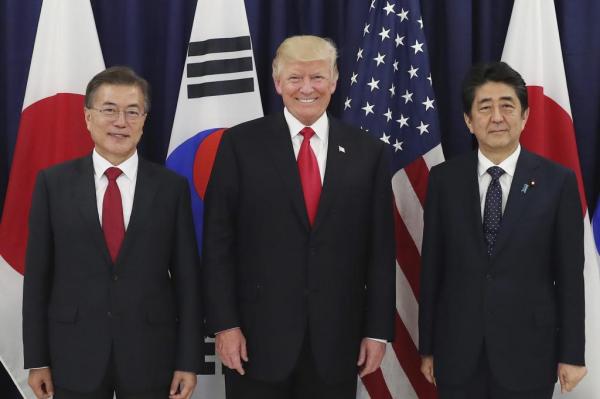
July 7 (UPI) — U.S. President Donald Trump and the leaders of Japan and South Korea took a united stand against the Kim Jong Un regime before the G20 summit in Hamburg.
Trump, South Korean President Moon Jae-in, and Japanese Prime Minister Shinzo Abe agreed on Thursday to increase pressure on North Korea, South Korean news service News 1 reported.
There may have also been suggestions from Trump that new economic sanctions should target firms doing business with North Korea, according to The Korea Times.
The move toward secondary boycott sanctions, however, has already been met with opposition in Beijing.
In June, China lodged a strong protest following a U.S. Treasury decision to impose sanctions on two Chinese individuals and a Chinese shipping company for abetting North Korea’s nuclear weapons program.
The trilateral summit this week, however, did not cover the military option the United States had raised earlier, a South Korean official told News 1.
Last week, Trump’s National Security Advisor H.R. McMaster had said he had presented the president with military options on North Korea. Trump has previously warned of a “major, major” conflict with North Korea.
Officials of the three countries are also expected to discuss the North Korea nuclear issue in the upcoming Northeast Asian Cooperation Dialogue.
Too much pressure, however, could compel North Korea to engage in further provocations, including a sixth nuclear test, according to South Korean analyst Chung Jae-hong of the Sejong Institute.
North Korea is growing its capability to launch ballistic missiles from any location in the country, according to U.S. analysts.
On 38 North, Joseph S. Bermudez, Jr. and Frank Pabian write that the launch of the most recent missile, the Hwasong-14, took place about 5 miles from Panghyon Airbase, a new area.
The site could be used for future research and testing, according to Bermudez and Pabian.






